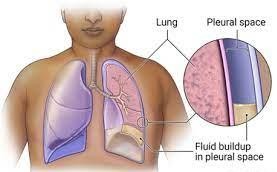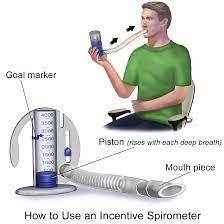The nurse understands that the major factor affecting oxygenation in a client who has fluid in the lungs is:
poor tissue perfusion from circulatory insufficiency.
decreased diffusion of oxygen from the alveoli to the blood.
lowered oxygen carrying capacity.
decreased concentration of oxygen in the air.
The Correct Answer is B
Choice A rationale: Poor tissue perfusion from circulatory insufficiency can affect oxygenation, but fluid in the lungs primarily impacts gas exchange at the alveolar level.
Choice B rationale: Decreased diffusion of oxygen from the alveoli to the blood is a major factor affecting oxygenation when fluid is present in the lungs.
Choice C rationale: Lowered oxygen carrying capacity can affect oxygenation but is not the primary concern in the presence of fluid in the lungs.
Choice D rationale: Decreased concentration of oxygen in the air is not the primary factor affecting oxygenation in a client with fluid in the lungs.
 |
Nursing Test Bank
Naxlex Comprehensive Predictor Exams
Related Questions
Correct Answer is A
Explanation
Choice A rationale: Inhaling slowly to raise the ball to the desired level and attempting to keep the ball raised for several seconds is the correct technique for using an incentive spirometer.
Choice B rationale: Blowing into the mouthpiece with a long slow expiration is not the correct technique for using an incentive spirometer.
Choice C rationale: Beginning breathing with a rapid, forceful inspiration is not the recommended technique for using an incentive spirometer.
Choice D rationale: Exhaling slowly to raise the ball and quickly inhaling is not the correct technique for using an incentive spirometer.

Correct Answer is C
Explanation
Choice A rationale: The deltoid muscle may not accommodate larger volumes as comfortably as other sites.
Choice B rationale: The dorsogluteal site is not recommended due to the risk of injury to the sciatic nerve.
Choice C rationale: The ventrogluteal site is the preferred site for IM injections in adults, providing a safe and well-vascularized muscle.
Choice D rationale: The vastus lateralis is a suitable site for infants and young children but may not be the most comfortable for adults receiving a 2 mL injection.
Whether you are a student looking to ace your exams or a practicing nurse seeking to enhance your expertise , our nursing education contents will empower you with the confidence and competence to make a difference in the lives of patients and become a respected leader in the healthcare field.
Visit Naxlex, invest in your future and unlock endless possibilities with our unparalleled nursing education contents today
Report Wrong Answer on the Current Question
Do you disagree with the answer? If yes, what is your expected answer? Explain.
Kindly be descriptive with the issue you are facing.
